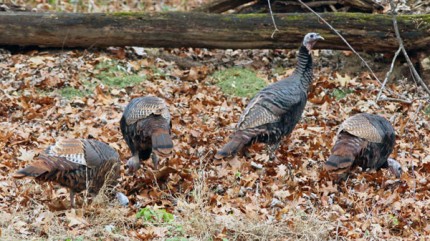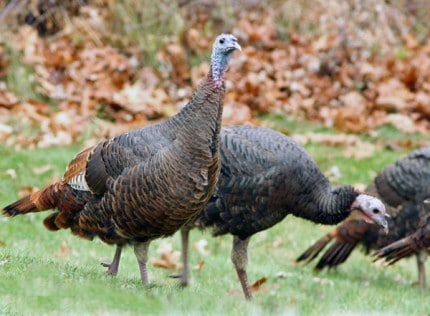
(Chelsea Update would like to thank Tom Hodgson and the Waterloo Natural History Association for the information and photos in this story.)
No one knows for sure if turkey was on the menu for the first Thanksgiving dinner, but it’s been a traditional part of the holiday cuisine in most households ever since.
So much so, that the original wild turkeys disappeared from most of their natural range before the turn of the 20th century. The last one officially recorded in Michigan was in 1897.
The primary reason for their demise was unregulated hunting and loss of their woodland habitat.
For nearly 60 years, there were no wild turkeys in Michigan. That’s hard to believe given the flocks of wild turkeys that currently roam the landscape in the Chelsea area.
Several efforts were made to reintroduce wild turkeys into the state. All failed until 1956 when the Michigan Department of Conservation released 784 wild turkeys brought from Pennsylvania. Their numbers have been growing ever since. Michigan’s current wild turkey population is estimated to be about 200,000 birds.
The turkey is the largest upland game bird in North America. Large males (called gobblers or Toms) may be 4 feet in length and weigh as much as 24 pounds. Females (called hens) are smaller. During their first season of life young turkeys of both sexes are called poults. Yearling males that are not large or strong enough to compete with mature gobblers are called jakes.
In spite of their size, turkeys are good short distance fliers and can reach speeds of 50 miles per hour. They are also fast of foot, running at speeds approaching 15 miles per hour. They also have excellent hearing and eyesight and are quick to spot potential predators.
During the winter months, turkeys segregate themselves into three different groups defined by sex and maturity. You would expect that these groups would be called flocks, a common term used to describe a gathering of birds. This is not the case, however. A group of turkeys is called a rafter. Some rafters will be all hens, some will be all gobblers, and others will be all jakes. These rafters remain segregated until the breeding season begins in spring. Then they break up as the jakes and the gobblers begin competing for the attention of the hens.
Turkeys are diurnal and can be seen feeding throughout the daylight hours, although they are most active in the morning. They roost in trees at night to avoid nocturnal predators like coyotes.
Turkeys are opportunistic feeders. In fall and winter they depend heavily on mast crops like acorns, but also benefit from waste grain left in the fields after corn and soy beans are harvested. In the spring and summer months they eat large quantities of grasshoppers, crickets and caterpillars. Insects are an especially important source of protein for the growing poults.
In April and May when the Toms are courting the hens, their gobbling is a common sound emanating from local woods and fields. To hear a gobbler and watch him strut his stuff, click on this link and have a happy turkey day.




















I just love seeing the wild turkeys around our rural property. I even saw their footprints in the snow last winter along a log that was down across the small creek near our property. Pretty smart!